What's New
Displaying results 3461 - 3470 of 4052
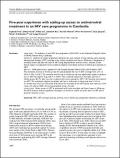
Resource | Publications,
The estimated HIV prevalence in Cambodia among adults aged 15–49 years declined from 2.0% in 1998 to 0.9% in 2006 (Ministry of Health Cambodia 2008). The number of people living with HIV ⁄ AIDS at the end of 2006 was a 61 400 (Ministry of Health Cambodia, NCHADS Surveillance Unit 2008; National AIDS Authority 2008). Since 2001, nongovernmental organizations (NGOs) have started pilot projects to deliver antiretroviral therapy (ART) and Cambodia has successfully applied for consecutive rounds of the Global Fund to fight AIDS, Tuberculosis and Malaria (GFATM). In the third quarter of 2007, more than 25,000 patients were receiving ART at 48 treatment sites, approaching 80% ART coverage (National AIDS Authority 2008).
This document aims to evaluate a 5-year HIV care programme (2003–2007) in the Sihanouk Hospital Center of HOPE, Phnom Penh, Cambodia.
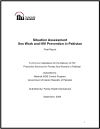
Resource | Reviews and Snapshots,
In 2009, the NACP selected Family Health International to provide technical assistance to NACP, PACPs and local organizations for strengthening HIV prevention interventions. One of the deliverables under the technical assistance is this Situation Assessment Report, documenting lessons learned in Pakistan and forming the basis of the design of other studies, strategies and interventions to be carried out under the Technical Assistance.
The size of the FSW population and their high number of sexual partners suggests that the expansion of the HIV epidemic is likely to be strongly influenced by the extent of the epidemic among FSWs and their clients, even though current HIV prevalence among FSW is low. Several recent surveys have shown that although prevalence among FSW is low, their risk is high and the epidemic potential is considerable because condom use is low and sexual partnerships of FSWs with IDUs are reported by over 10% of the female sex worker population surveyed.
Specific objectives of the assessment were to:
- Assess the structure of the sex trade, changes taking place and implications for reaching target groups Understand the legal and policy environment and its impact on the services for sex workers
- To assess knowledge, attitude and practice of female sex workers and sexual networking patterns
- To assess involvement of target population in the implementation of HIV prevention activities
- To explore opportunities and constraints for formation/operation of FSW self-help groups
- To assess the capacity of NGOs to deliver services for female sex workers
- To assess the roles and responsibilities of Provincial AIDS Control Programs

Resource | Presentations,
Presentation Outline
• AIDS in Asia
• Funding for Prevention and Care
• Vulnerability to the Crisis
• Targeted Response is Key
• ART Increases Program Costs
• Response Publicly Financed
• Summary
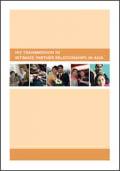
Resource | Publications,
A regional discussion on HIV transmission in intimate partner relationships was initiated by UNAIDS through a regional meeting on Women and HIV in Cambodia in July 2006. Subsequently, UNAIDS convened a satellite session at the 8th International Conference on AIDS in Asia and the Pacific at Colombo in August 2007, and some countries started to work on desk reviews. Following the recommendations of the Commission on AIDS in Asia (2008), the ASEAN Foundation, UNAIDS, UNIFEM and the United Nations Development Programme (UNDP) together initiated the development of the evidence base on HIV transmission in intimate partner relationships in Asia through collaboration between researchers, regional networks of people living with HIV (the International Commission on Women and the Asia Pacific Network of People Living with HIV/AIDS) and the United Nations (UN).
In July 2008 a regional coordination committee consisting of UN (United Nations Population Fund (UNFPA), UNDP, UNIFEM, UNAIDS), networks of people living with HIV and the ASEAN Foundation was formed to oversee the process. UNAIDS, UNIFEM and UNDP provided technical and budget assistance to countries to carry out desk reviews and focus group discussions. A technical meeting in November 2008 that included the Coalition of Asia Pacific Regional Networks on HIV/AIDS (the Seven Sisters) provided space to review data trends and gaps from the country studies, refine the methodologies and develop a regional network for information exchange.
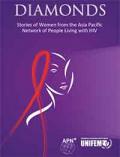
Resource | Publications,
As the world witnesses a sharp increase in the number of women living with HIV, women leaders like
those telling their stories in this publication need to be heard. Coming from different socio-economic and personal contexts in the Asia Pacific region, these women speak of the power dynamic in their relationship with men, weighted in favour of the latter. They speak of discrimination and violence that they endure, rendering them vulnerable to HIV – a lack of information about HIV, a lack of knowledge about a partner’s HIV status, an inability to negotiate sex or safe sex, because they fear violence. They speak about the stigma and discrimination they face and the burden of secrecy that weighs down on them (and women do face disproportionate discrimination when compared to men), unaffordable healthcare services and the burden of care-giving responsibilities.
Emerging from the shock of testing HIV positive and the implications this has for their lives and relationships, transcending the trauma of stigma and discrimination - these women demonstrate remarkable courage in breaking the culture of silence enveloping their HIV status. They show intense resilience in picking up the pieces of their lives and deciding to LIVE, and in inspiring other HIV positive women with similar concerns, to LIVE.

Resource | Presentations,
This is a presentation on the gaps in HIV Strategic Information within the Asia Pacific. This was presented during the 9th ICAAP Bali, August 2009.
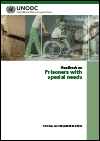
Resource | Publications,
This handbook covers the special needs of eight groups of prisoners, which have a particularly vulnerable status in prisons. They are: Prisoners with mental health care needs; Prisoners with disabilities; Ethnic and racial minorities and indigenous peoples; Foreign national prisoners; Lesbian, gay, bisexual, and transgender (LGBT) prisoners; Older prisoners; Prisoners with terminal illness and Prisoners under sentence of death.
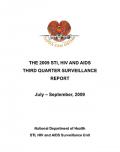
Papua New Guinea: The 2009 STI, HIV and AIDS Third Quarter Surveillance Report (July-September 2009)
Resource | Publications,
This report provides information compiled from three routine HIV and AIDS databases at the NDoH during the 3rd quarter of 2009. These three databases are (1) Routine HIV case reporting database (2) Routine monthly testing summary database (3) Routine monthly ART summary database.

Resource | Publications,
Although HIV program evaluations focusing on mortality on ART provide important evidence on treatment effectiveness, they do not asses overall HIV program performance because they exclude patients who are eligible but not started on ART for whatever reason. The objective of this study was to measure mortality that occurs both pre-ART and during ART among HIV-positive children enrolled in two HIV-programs in Cambodia.
HIV-positive children experienced a high mortality and loss-to-follow-up rates before starting ART. These program outcomes may be improved by a more timely ART initiation. Measuring overall in-program mortality as opposed to only mortality on ART is recommended in order to more accurately evaluate pediatric HIV-programs performance.

Resource | Videos,
The HIV/AIDS Data Hub provides free online access to available data pertaining to the epidemiology, vulnerability, risk behaviors, socio-economic impacts, and responses to HIV. Its mission is to support national authorities and their partners in the provision of effective evidence-based responses to those affected by the AIDS epidemic in the Asia-Pacific region.





